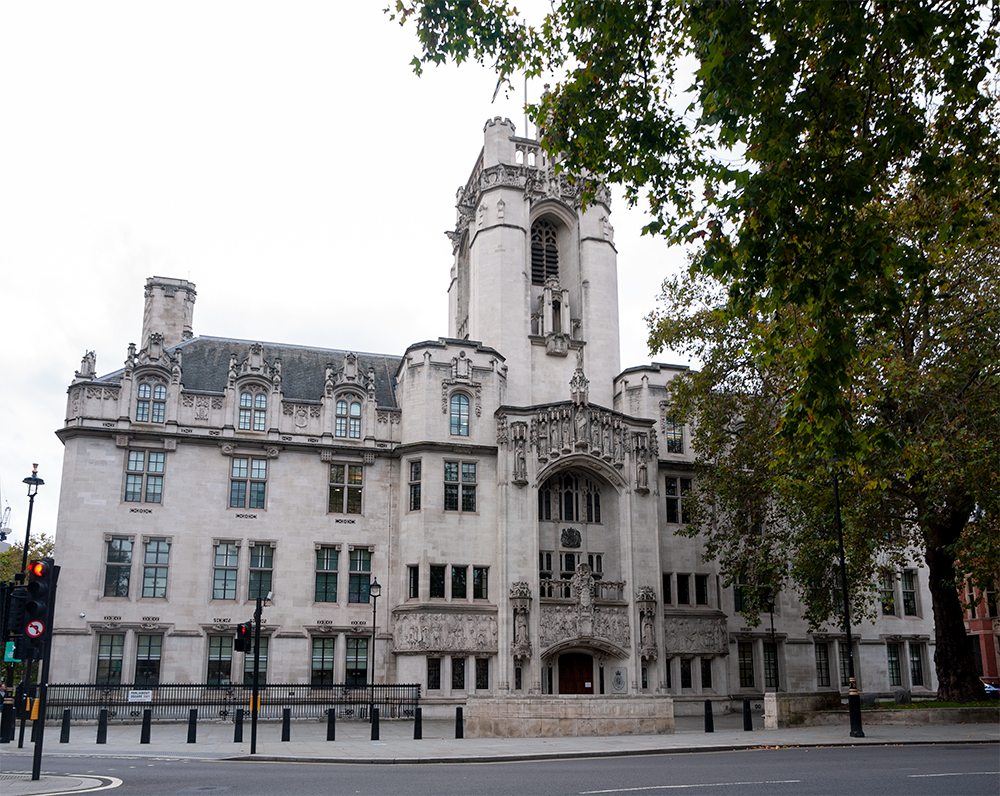Supreme Court rejects Scottish consumer protection appeal over prosthetic hip

A Scottish man who had a metal-on-metal prosthetic hip fitted in 2009 that he claimed was defective has lost a final appeal against the refusal of his case in the UK Supreme Court.

About this case:
- Citation:[2022] UKSC 19
- Judgment:
- Court:UK Supreme Court
- Judge:Lord Lloyd-Jones
John Hastings had sought damages from the manufacturers of the hip, Finsbury Orthopaedics Ltd and Stryker, under section 2 of the Consumer Protection Act 1987. It was originally ruled by the Outer House of the Court of Session that the appellant had failed to establish that the product was defective, with the Inner House refusing a reclaiming motion against the decision in 2021.
The appeal was heard by the President of the Supreme Court, Lord Reed, sitting with Lord Kitchin, Lord Stephens, Lady Rose, and Lord Lloyd-Jones. Robert Weir QC, Robert Milligan QC and Clare Connelly appeared for the appellant. The respondents were represented by Kenny McBrearty QC, Alexander Antelme QC, David Myhill, and Ewen Campbell.
Unchallenged expert evidence
In 2009, the appellant was fitted with a MITCH-Accolade prosthetic hip, which was made using parts supplied by both respondents. While it was common ground at proof that the statistical evidence presented to the court was not sufficient of itself to establish that the hip was defective, the appellant argued that it was defective by way of certain design flaws as well the fact that the product was withdrawn from the market after concerns were expressed by the orthopaedic community.
At proof, the respondents relied upon evidence of biostatistics from an expert, Professor Platt, which was unchallenged by the appellant. The parties were agreed that Professor Platt’s evidence demonstrated that there was no reliable statistical evidence that the revision rate (i.e., the chance that the hip would require replacement in a given timeframe) of the MITCH–Accolade product was out of line with the relevant benchmarks.
At first instance, the Lord Ordinary concluded that in light of the expert evidence, the matters raised by the appellant were insufficient to constitute a defect within the meaning of the 1987 Act. The Inner House subsequently refused the appellant’s reclaiming motion, holding that the Lord Ordinary had not erred in his decision making.
Before the Supreme Court the appellant submitted that, notwithstanding the evidence of Professor Platt, it was open to him to prove his case by reference to the evidence that established a prima facie case that the MITCH–Accolade product was defective. He did not seek to pursue his case regarding the alleged design flaws. The sole question before the Supreme Court, therefore, was whether the Outer and Inner Houses were correct to find that, notwithstanding the prima facie evidence, the appellant had failed to prove that the product was defective.
No absolute level
Giving the leading judgment with which the other four judges agreed, Lord Lloyd-Jones observed: “In this case the nature of the product is such that there can be no entitlement to an absolute level of safety. It is natural for a prosthesis of this sort to wear and to shed metal debris that can cause soft tissue damage, so this of itself cannot be a defect.”
He continued: “Given the wide range of revision rates in the case of metal-on-metal prostheses generally and the fact that the revision rates for MoM prostheses were typically higher than those for non-MoM prostheses, the generalised expressions of professional concern do not assist the appellant in establishing that the MITCH-Accolade product was defective.”
On whether the withdrawal of the product from the market assisted the appellant, Lord Lloyd-Jones said: “The Lord Ordinary found, and was clearly entitled to find, that the withdrawal of the MITCH-Accolade product was brought about by commercial considerations. As a result, the circumstances and reasons for the withdrawal of the product from the market do not provide any support for the appellant’s case that the product was defective.”
Turning to the notices issued in respect of the project, he went on to say: “In assessing whether there has been compliance with an entitled expectation the court is entitled and required to have regard to material available at the time of proof which was not available in 2012 when the notices were issued. By the time of proof in 2019 there was in evidence before the Outer House a statistical analysis by Professor Platt which was not contested by the appellant. The prima facie evidence provided by the notices must now be examined in the light of such of the conclusions of Professor Platt as were accepted by the Lord Ordinary.”
Lord Lloyd-Jones concluded: “Ultimately, this appeal is no more than an attempt to appeal against the Lord Ordinary’s findings of fact. As the Lord President observed in his opinion, in order to reverse a determination of fact, the appellate court must be satisfied that the Lord Ordinary erred in law, made a finding without any basis in the evidence or demonstrably misunderstood, or failed to consider, relevant evidence. Otherwise, it can only interfere with the findings of fact if it concluded that the Lord Ordinary was plainly wrong. None of these requirements is satisfied in the present case and, accordingly, it is not open to this court to interfere with the Lord Ordinary’s findings.”
The appeal was therefore dismissed.






